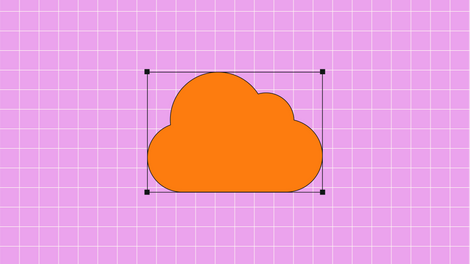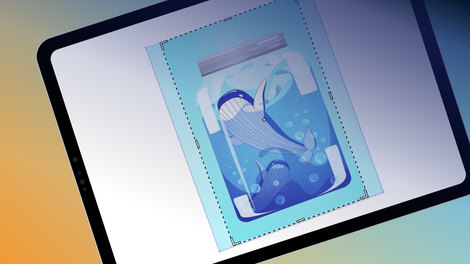For buyers and sellers alike, Etsy is a helpful platform for targeting the right people at the right time. But how can you utilize Etsy’s size charts and overall design most profitably, and where did Etsy even come about?
Jumpstart your ideas with Linearity Curve
Take your designs to the next level.
Let's take a closer look.
| Graphic | Size in pixels | Size in inches |
| Profile Photo | 800 × 800 px | 8.3 × 8.3 inches |
| Profile Banner | 1,920 × 480 px | 20 × 5 inches |
| Cover Photo | 3360 × 840 px | 35 × 8.75 inches |
| Shop Icon | 400 × 400 px | 4× 4 inches |
The history of Etsy
The place where you can find anything from custom bracelets, wedding dresses, and vibrant prints, e-commerce shop Etsy has made it big. But even big ventures have small beginnings. Back in 2005, in a Brooklyn apartment, Rob Kalin, Chris Maguire, and Haim Schoppik created a company that would give the world an online platform to sell their goods.
Two years later, in 2007, Etsy had nearly 450,000 registered sellers accumulating $26 million in annual sales.
While Etsy was growing, unhappiness brewed in the company’s executive committee. So, what should have been a crucial period for Etsy turned into a positive crossroads. Deeply in need of leadership, Kalin hired Chad Dickerson, Senior Director of Product at Yahoo. Dickerson was brought on as Etsy’s Chief Technology Officer and was ultimately its saving grace. He took to the role quickly and built out Etsy’s engineering team.
Dickerson proved so effective that three years after being hired as CTO, he jumped into the CEO role, replacing Kalin. This had not been Kalin’s first step away from the company. In 2008, he also removed himself from day-to-day operations for a time. However, this time, Kalin would not be making a return. The executive switch-up marked a significant change in Etsy's company culture and corporate goals.
In 2013, Etsy amended its service terms so that sellers could sell manufactured goods and handmade items. This was a massive shift for a company built around craftsmanship and supporting small businesses. As a result, some long-time users wanted to leave the site.
But many found they couldn’t because of the potential earning Etsy offered.
Simply put, sellers couldn’t make as much money on a personal website as they could on Etsy. So, there wasn’t much loss in the number of sellers on Etsy’s site.
Beyond cultivating sales, Dickerson was also making other core moves, including a strategic hire that attracted the company some notice. In July 2014, Etsy brought on Mike Grishaver as its Senior Vice President of Product.
The company brought on Grishaver for Etsy’s mobile user experience as its consumers increasingly shopped on their phones.
Since then, Etsy has developed a mobile app for sellers to make in-person sales and update their site listings from their phones.
Today, the company boasts over 54 million members.
Creating an Etsy shop
There's a lot that goes into creating your own Etsy shop, but don't worry! We're here to help you get set up and learn what image size all of your assets should be. No matter what you need to advertise, we have the correct sizing guidelines for you.
You will need to create shop icons, banners, and other custom assets to flesh out your Etsy home page. You will also need templates for your product photos, which are the most crucial factor for your Etsy store's success.
Get creative with our ready-to-use templates.
Linearity Curve offers templates for every social media platform and various use case templates for posters, business cards, slides, app store screenshots, and more.
If you want to be a successful Etsy seller and create a cohesive personal brand that will impact your customers and keep them coming back for more, you'll need to create your assets together. This is to ensure that they are the same quality and brand style and give yourself the tools to post branded content on social media channels.
Additionally, as a shop owner, the images you upload to your Etsy shop should be high-quality .jpeg, .png, or .gif (sadly, animated .gifs are not supported), and they should align to the correct aspect ratio.
Etsy cover photo
The first type of image for Etsy you'll need for your profile is your cover photo. It's the largest piece of real estate you have on Etsy.com, so make good use of it! It's the main thing users will see when navigating your Etsy profile.
The minimum size allowed for a cover photo is 1200 x 300 pixels, but don't stop there. You want your cover photo to be the highest possible quality, so we recommend using something closer to a 3360 x 840 pixels size. Remember to keep your cover image at a 4:1 aspect ratio, and you'll be fine!

Etsy profile photo
Next, you'll need a profile photo! This one is easy. Just upload a square image that showcases who you are and aligns with your brand identity. We recommend uploading an image that is at least 500 x 500 pixels just to ensure that it is the same high quality as the rest of your shop.
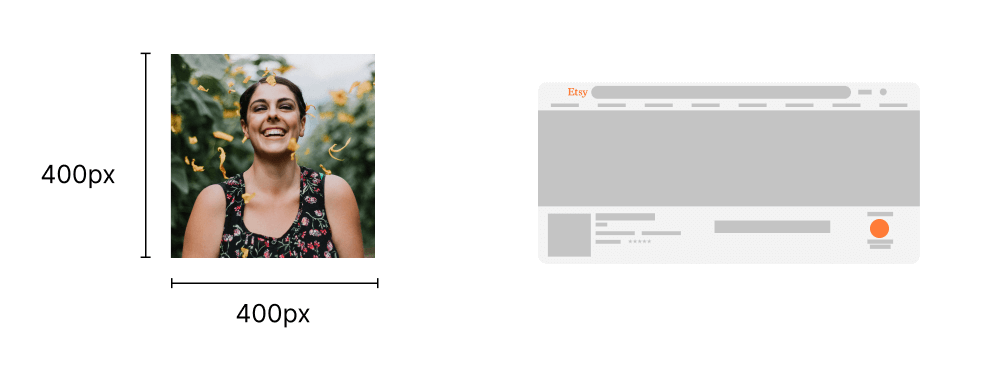
Etsy shop icon
Your Etsy shop icon is the perfect place to put the logo for your shop. It should reflect the personality of your brand, and it should also contain your brand’s name. Just make sure to keep the text short and simple.
This is another square image, so the resolution matters less, but we recommend going with an image at least 500 x 500 pixels in size for your shop Icon. We're aiming for a balance between image quality and file size here.
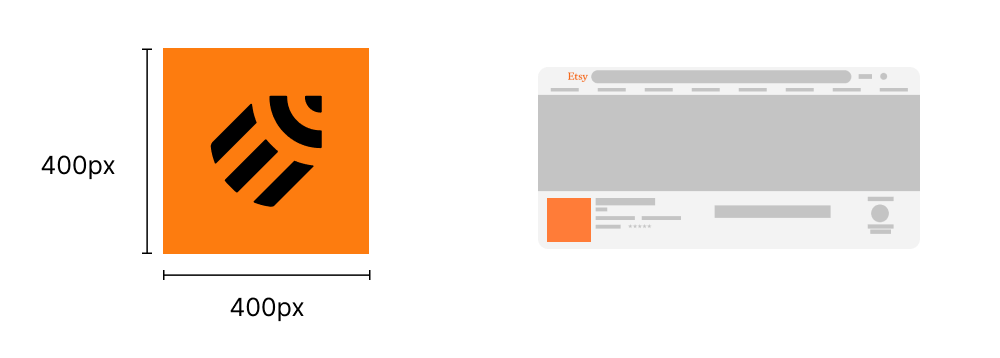
Etsy shop banner
Next up is your banner image, which is why you need to take into account your shop banner size and overall banner design. This is your most significant piece of branding for your storefront. Think of it like your own personal billboard! So, make sure that you create a well-designed banner with the correct sizing.
It's the perfect place to display your most prominent branding, whether high-resolution pics of your products, personal photography, or brand logos. Your Etsy banner should also be of high quality.
The recommended size for a small banner type (or your mini shop banners) is 1600 x 213 pixels. The recommended size for big banners is 1600 x 400 pixels.

Etsy item thumbnail photo
The thumbnail images on your item listings are essential. Your products will initially be shown to shoppers as these small images, which will only be displayed on a larger gallery page at a higher resolution once you click on them. Therefore, you need to make sure that each image is compelling and intriguing to your audience on a small scale.
Since we have a smaller image size to work with, let's go with higher quality. We recommend a 570 × 456 pixel size for your thumbnail images.
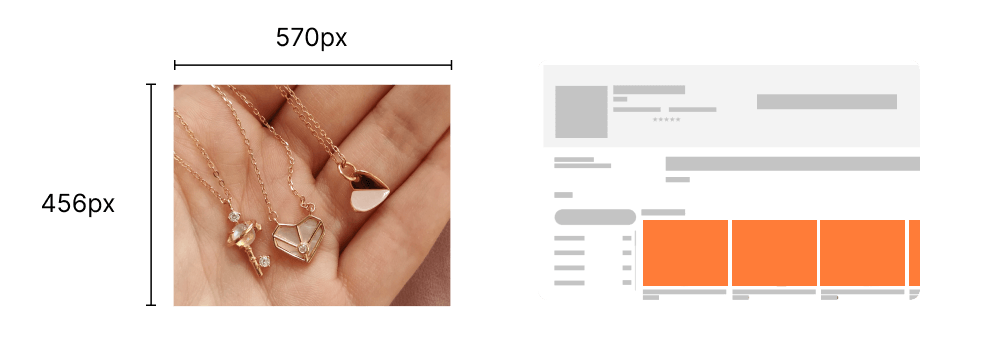
Etsy listing photo
Now, finally, we come to the good stuff; your listing images for your amazing products! When making an Etsy listing, you'll need to start with some good product photography. Once you've got high-quality images of your products, you'll need to upload them to your listings.
Ready to create brand assets that pack a punch?
Visit our Academy for free marketing design courses.
Make sure to export or save the image files at a high enough .dpi, so they are not blurry, even when a shopper opens the image with the zoom function. The sizing should be 2000 pixels, and the resolution should be 72 pixels per inch.
As you want your images to load promptly for your potential customers, they should be no larger than 1 MB. To ensure that your images don’t exceed this, save them in a .jpeg format. You can even reduce the quality down to 80%.
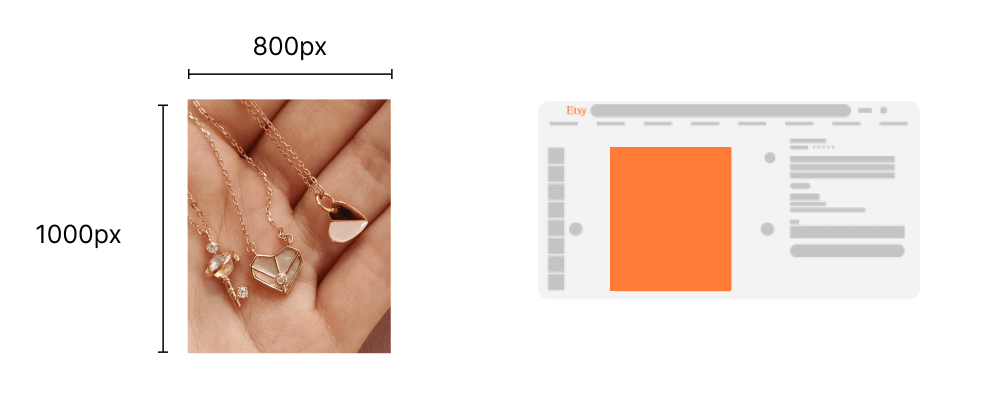
The pros of using Etsy
If you’re not selling on Etsy, you’re missing out on an opportunity to reach over 90 million active buyers seeking out unique products each day.
The Etsy marketplace is ranked the fourth largest eCommerce site by monthly visits in the US, making it an opportunity for brands to sell handmade goods, one-of-a-kind items, and craft supplies. Aside from its extensive user base, selling on Etsy has several benefits.
A straightforward set up
Etsy provides retailers with everything they need to set up their shop and sell products quickly. With a step-by-step ultimate guide, users can name their shop, create their storefront, set up payment and billing options, and list items.
The marketplace also offers a lot of helpful hints to guide sellers through the process, such as what to do when you make your first sale.
Lots of buyers
One of the most important advantages of selling on Etsy is that everyone has heard of it. This means that you already have an audience to promote your products to. Unlike larger eCommerce marketplaces, buyers come to Etsy looking for something they can’t find anywhere else.
Commitment to small businesses
Etsy's mission is to help small businesses successfully sell their products to shoppers seeking novelty items. With a slogan to “Keep Commerce Human,” Etsy describes itself as a group of sellers that it hopes to connect with millions of buyers looking for incredible items.
Etsy also offers a firm seller protection policy to sellers. For small business owners, this policy can help them navigate through the customer service challenges of selling online. Etsy’s case system also allows sellers and buyers to work together to find a resolution for order issues.
Etsy offers color profile advertising tools on its site through Etsy Ads, which may show items throughout Etsy, including Etsy Search, Category Pages, and Market Pages on both Etsy.com and the Etsy app. This makes it easier for your listings to catch people’s eyes. Etsy sellers also have the opportunity to run sales and promotions in their shop.
Another benefit of selling on Etsy is the sales stats that are provided. From the shop manager app, you can see your shop's performance, where traffic comes from, and how shoppers engage with your listings. This can help to determine trends and inform future marketing opportunities.
Opportunities for expansion
Sellers who find success on Etsy can take their shop to the next level by subscribing to Etsy Plus, which offers:
- Customization tools
- Monthly credits for listings and ads
- Access to exclusive discounts for custom website addresses, business cards, and custom shipping boxes (for your shipping methods).
Smaller listing fees
Creating a shop on Etsy is free and gives you access to many tools and expertise from a community of sellers. Once you make a sale, a commission fee and a standard payment processing fee are charged (similar to other eCommerce marketplaces).
Remember that Etsy has raised its fee from 5% to 6.5% as of April 2022. Something to consider when thinking about whether or not Etsy is the right platform for your business or not.
Successful app management
Etsy has developed a ‘Sell on Etsy’ app, which allows sellers to manage their shop from their mobile devices. This offers insight into sales, allows you to update listings, and view and respond to customer inquiries.
Regarding shipping, Etsy offers tools to help navigate different options. Etsy includes shipping profiles, which can make updating shipping prices on items in your shop easier. There’s also a tool to calculate shipping. Sellers in the US can also purchase USPS shipping labels through Etsy and save up to 30% on shipping costs.
Etsy’s marketplace also has advanced security for purchases and fraud alerts, so you can rest assured that your transactions are safe.
Wrap Up
One of the most frequently asked questions regarding Etsy is the correct size and ratio of Etsy’s product listing quality photos, cover photos, shop icons, banner options, and thumbnails should be. So, it goes without saying that sizing and ratio are essential for your Etsy product photos.
The ratio is the width of an image divided by its height. For example, if you want to create a square image, you would use a ratio of 1:1; for a landscape shot, you'd use a ratio of 3:2; and so on.
Width (the size) is the number of pixels in your image. Height is the number of pixels across your image. You can adjust these numbers when you capture an image.
When someone searches Etsy or views your store, the ‘galleries’ meant to attract their attention are a ratio of 4 to 1 (a bit wider than they are tall). So, if the pictures you upload aren’t a 4 to 1 ratio, you risk your products being cut off and not showing. The results page is an essential place for capturing the attention of potential buyers, and with part of the product not even being visible, there’s a good chance you‘ll be overlooked.
Moreover, if your products' images are all different sizes (or they are the wrong size), they will create ugly gaps between them (so, make sure you have a good quality original image to work with for each product). The 'containers' for your products will then be large enough to contain the biggest image so that any smaller images will leave an empty space surrounding them.
Remember, all of these images are easy to crop and create in an image editing software program like Linearity Curve, Canva, or Photoshop. All you need to do is capture quality images, ensure there is a target audience for what you are trying to sell, and your editing software will do the rest.
So, go ahead! Jump into making your own Etsy store a reality, and stand out from the crowd with Vectornator!
Jumpstart your ideas with Linearity Curve
Take your designs to the next level.
Create your design with Linearity Curve
Use Linearity Curve's quick and easy in-app preset template to create your next design directly from the Home screen.
Etsy Banner Size: 3360 × 840 pixels
Recommended Etsy banner image size: 3360 × 840 pixels
Minimum dimensions to update: 1200 x 300 pixels
Safe area for text and logos: 1546 x 423 pixels
File size: 1 MB for best results
Share this!
Benjamin Barnhart
Ben is the Principal Copywriter for Linearity, living in Berlin. His hobbies include board games, cooking, reading, and writing.


:quality(75))
:quality(75))
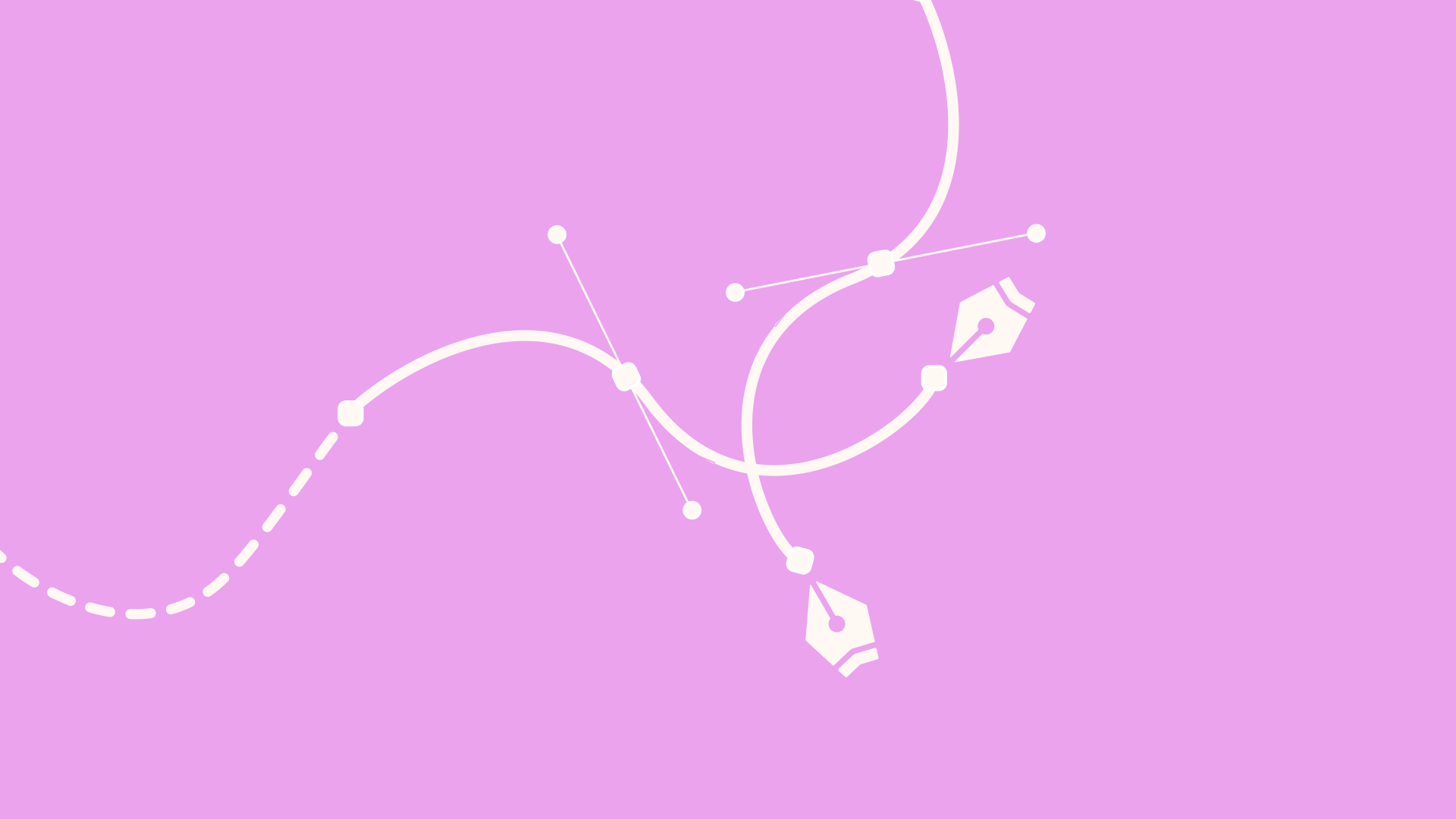


:quality(75))
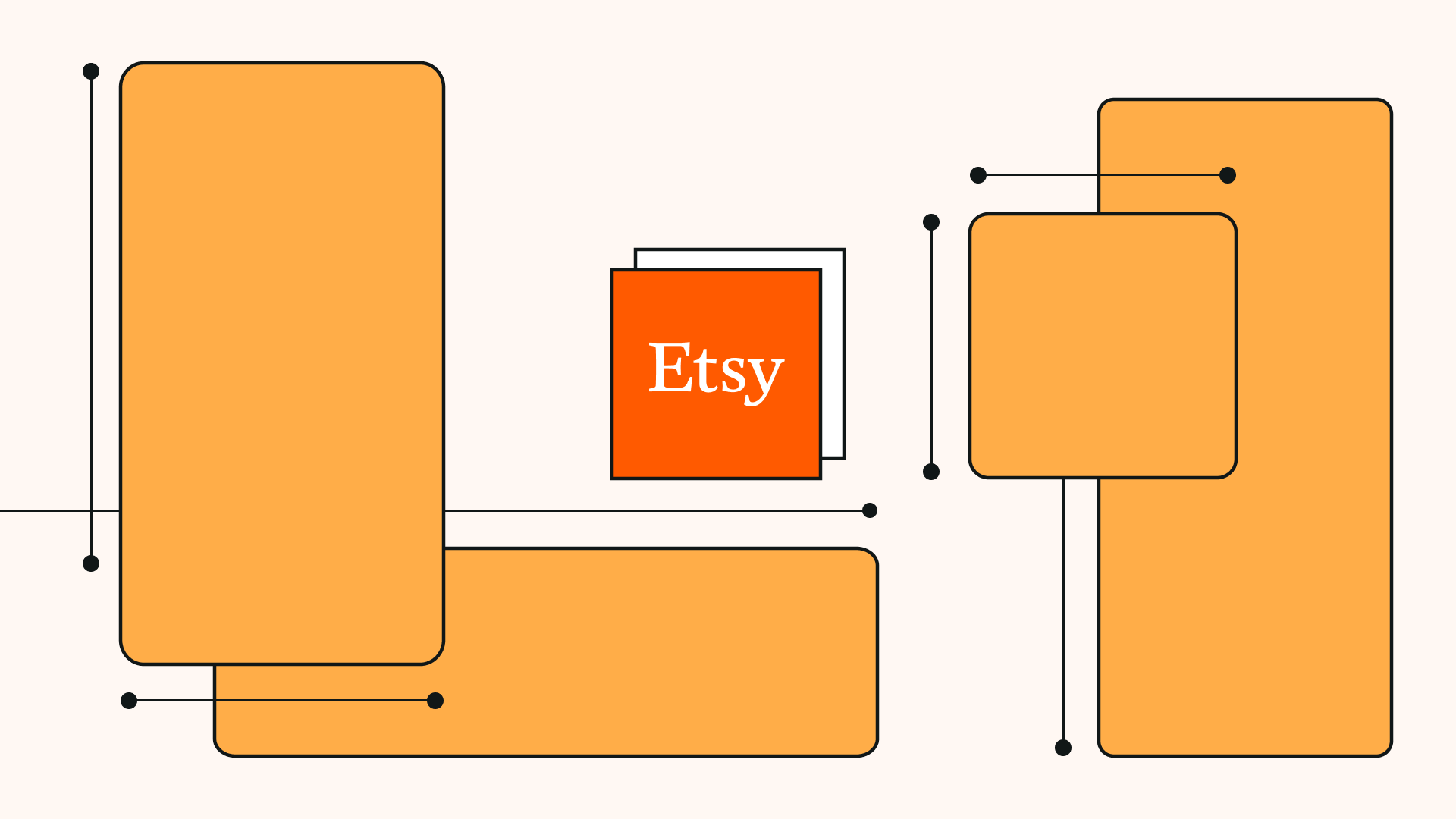
:quality(75))
:quality(75))
